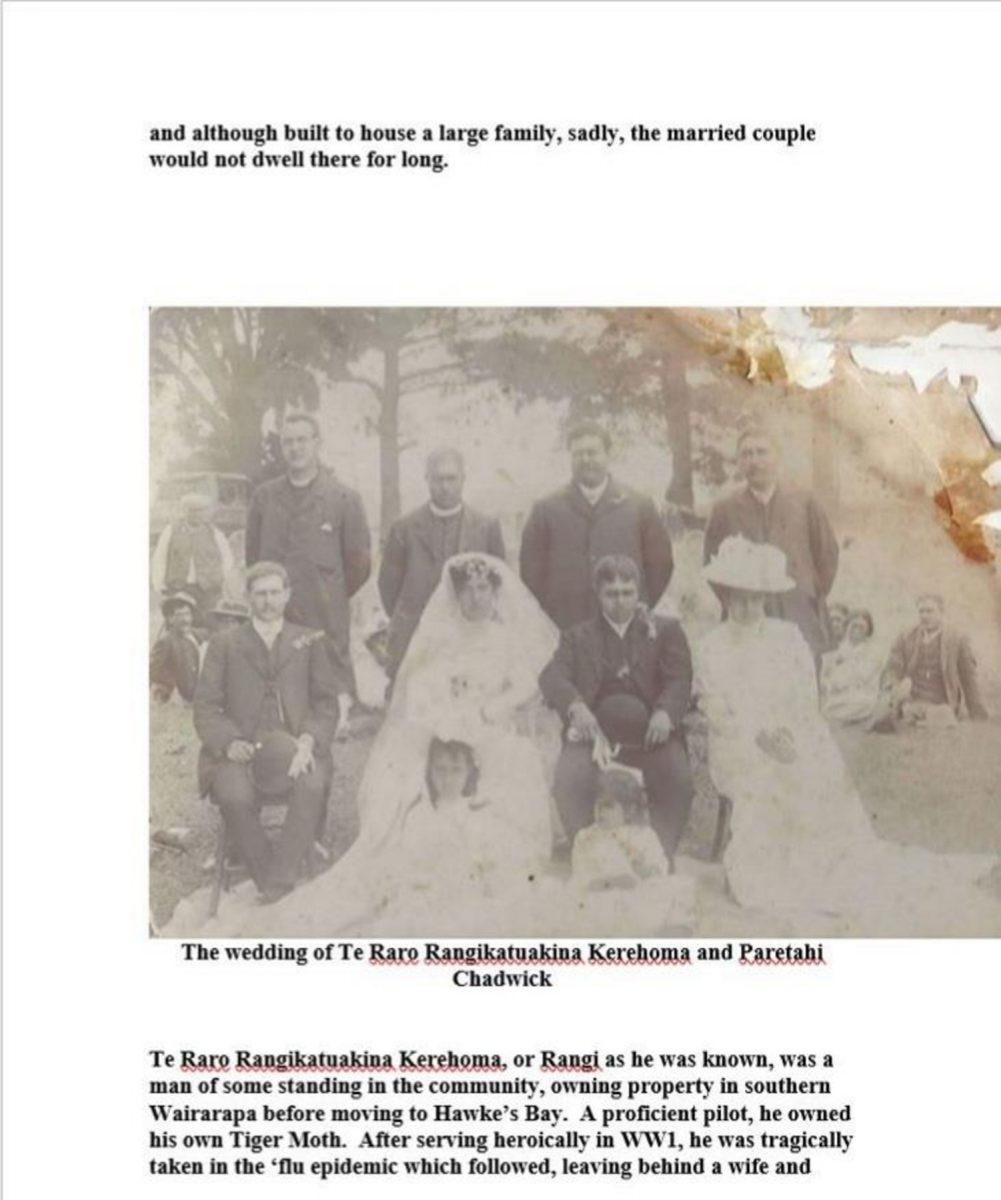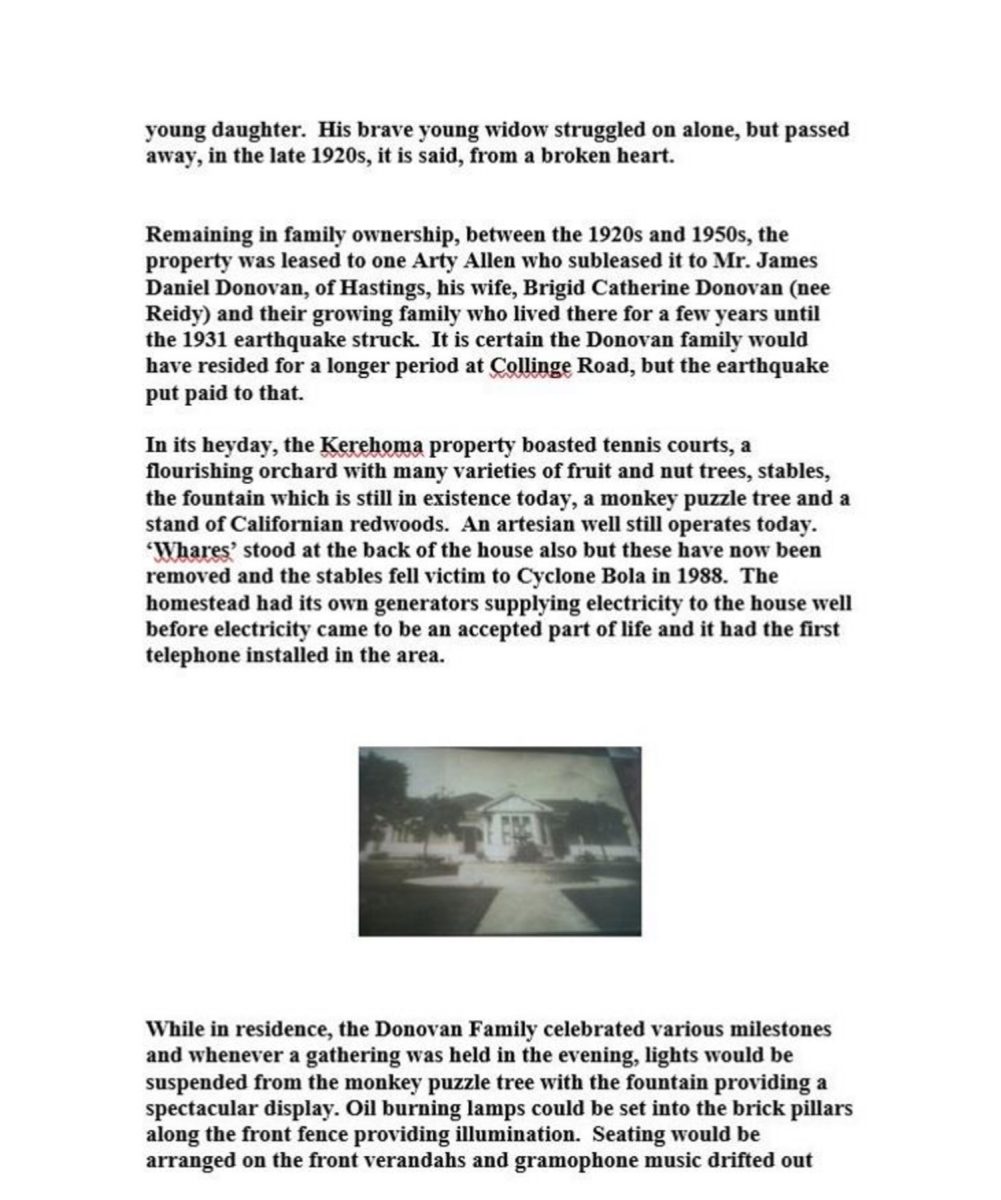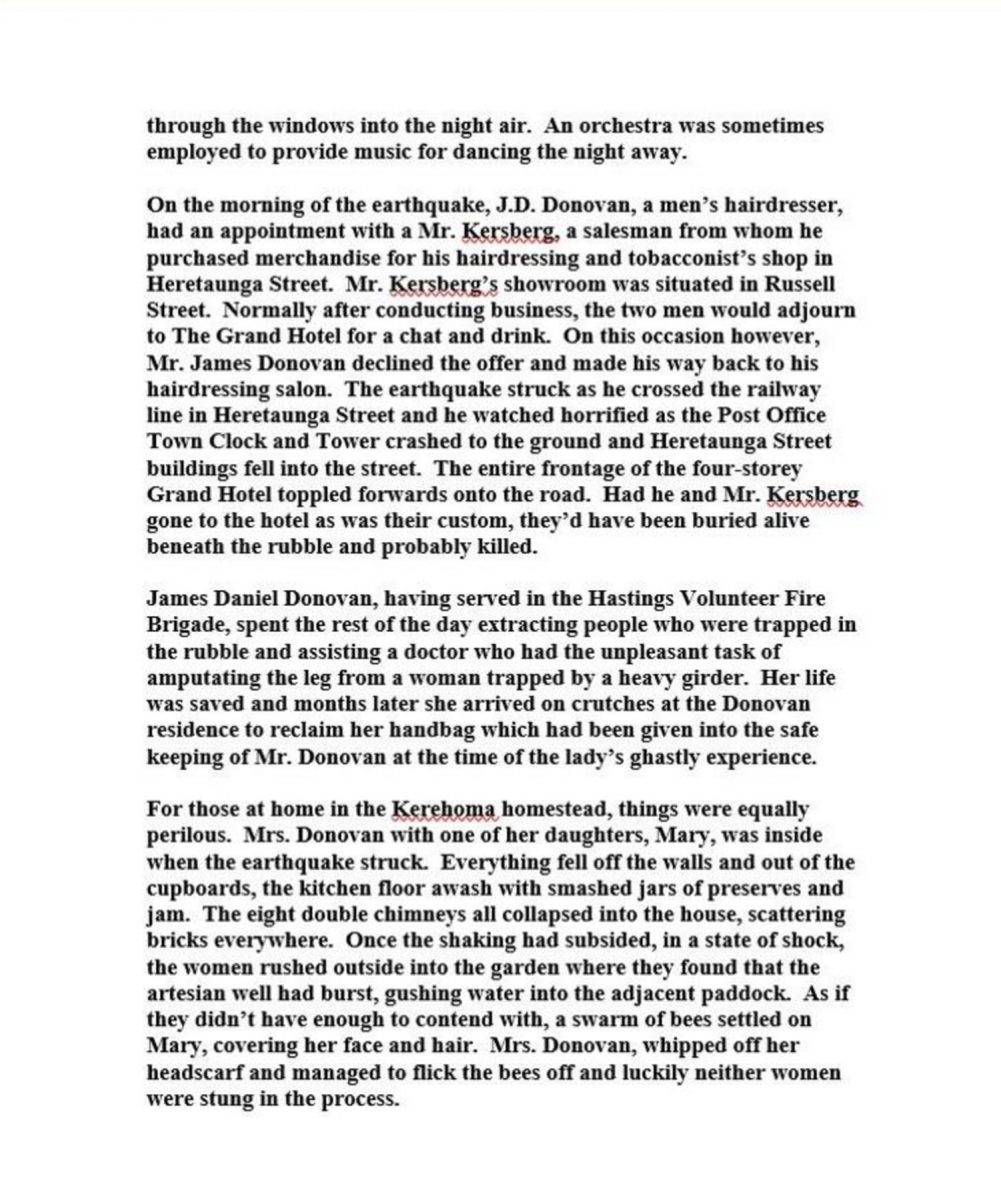They then set out to find Mr. Reilly, their gardener who they found buried beneath a pile of leaves with his wheelbarrow on top of him. Mr. Reilly was an old age pensioner with nowhere to live. In return for keeping the large garden and tennis courts in order, the Donovans gave him a home. He lived in one of the ‘whares’ at the back of the Kerehoma homestead.
Other members of the family were either at work or school when the ‘quake struck. Margaret and Clare Donovan were in attendance at St. Joseph’s Convent School. It was the first day back at school after the holidays and as was the case elsewhere, everything fell off the walls, bookcases toppled forwards and blackboards crashed to the floor with petrified children screaming in terror and panic. The entire school ran outside onto the rugby field, thinking the end of the world had come. Margaret Donovan’s class watched the Standard One class stampede towards the school doorway, but a quick-thinking nun, Sister Joan, barred their way while a huge double chimney crashed to the floor in front of them after which the class scrambled over the bricks to safety outside. Maurice Donovan arrived to dub his sister home on his bike while Clare Donovan walked home with her friend Molly Fern. A large drain blew up like a huge geyser just after Margaret and Maurice passed over it. When they arrived home they found Mrs. Donovan and Mary sitting on a garden seat under a tree to the left of the main entrance gates, everybody happy to be re-united. A son, Verdon Donovan, a fitter at the Whakatu Freezing works at the time, arrived home, deposited his packed lunch and set off for Hastings township to administer help. The eldest son of the family, Thomas Donovan, was working at Carlyle, McLean, Scannel and Wood, Solicitors, at the time. After the earthquake he went round to Heretaunga Street to see if his friend, the family butcher, Mr. Thear was alright. Tom couldn’t find him and was about to leave the butcher’s shop when, on impulse, he decided to check the walk in freezer. Luckily the door opened and Tom found Mr. Thear slowly freezing to death as there was no inside door handle. Mr. Thear, no doubt, was forever grateful to Tom Donovan for saving his life. (See notes).
Once the family had re-assembled that night at Collinge Road, all their mattresses were dragged outside and they slept beneath the stars, fearing it was too dangerous to sleep inside. Had the earthquake happened during the night, they might well have been killed as the


















Do you know something about this record?
Please note we cannot verify the accuracy of any information posted by the community.